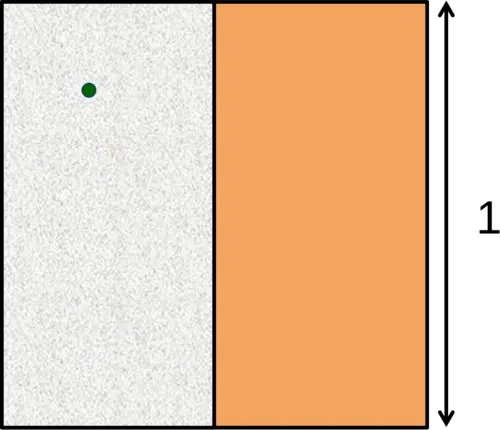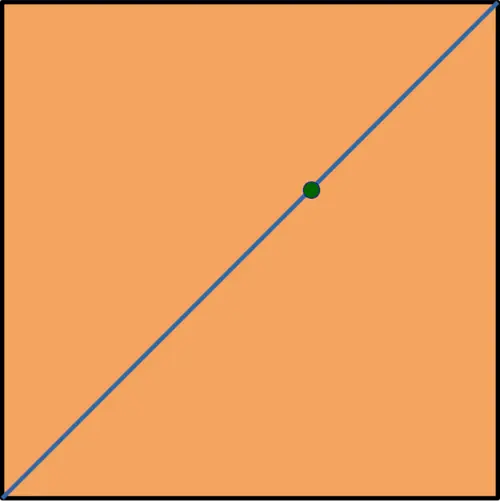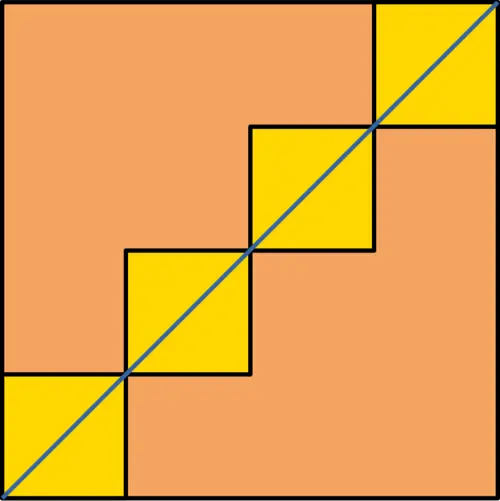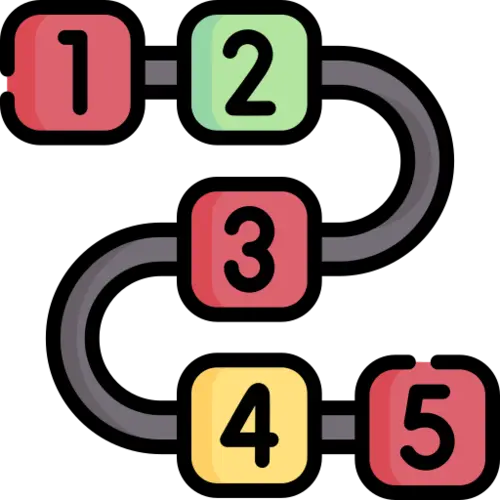Zero Probability Does Not Mean Impossible
How to count a set of infinite size?

Suppose you are given a unit square and asked to choose a point inside it uniformly at random. What is the probability that the point lies in the left half of the square? In problems with a finite number of outcomes, we usually count them to calculate probabilities. However, when dealing with infinitely many possibilities, such as points inside a square, counting no longer works. Instead, we rely on calculating the area of a region. In this case, the left half occupies half the area of the unit square, so the probability is \(\frac{1}{2}\).
Measure on an arbitrary set
In modern probability theory, the concept of area in two dimensions and volume in three dimensions is unified under the single idea of measure. A measure extends the notion of counting from finite sets to arbitrary sets.
Zero probability events

The measure-theoretic framework helps us handle more subtle questions. For example, consider a modified problem on the unit square. Suppose we draw a line connecting two diagonally opposite corners. What is the probability that a randomly chosen point lies exactly on this line?

The area of the line is clearly smaller than the area of the unit square. To make this precise, we can cover the diagonal with smaller squares. Start with four squares of side length \(\tfrac{1}{4}\). Together, they give an upper bound on the area of the line as \(\;4 \times \left(\tfrac{1}{4}\right)^2 = \tfrac{1}{4}\).
If we shrink the squares further and use eight squares of side \(\tfrac{1}{8}\), the upper bound becomes \(\;8 \times \left(\tfrac{1}{8}\right)^2 = \tfrac{1}{8}\).
In general, with \(n\) such squares, the upper bound on the area is \(\;n \times \left(\tfrac{1}{n}\right)^2 = \tfrac{1}{n}\).
Since this holds for all \(n\), letting \(n \to \infty\) gives an upper bound of \(0\). On the other hand, by definition, area cannot be negative, so it is at least \(0\). Combining these bounds, we conclude that the area of the line is \(0\).
Therefore, the probability that a randomly chosen point lies exactly on the diagonal is \(0\).
Improbable events are not impossible
If the area of the line is zero, does that mean it doesn’t exist inside the square? Of course not—it clearly exists. This is exactly what we call an improbable event or a zero-probability event. When we say an event is improbable, it does not mean that the event is impossible. Improbable events are those that have zero measure. In theory, improbable events can happen, but in practice, they will not happen almost surely. The key phrase “almost surely” captures the idea that the event has probability zero but is not strictly impossible.
Author
Anurag Gupta is an M.S. graduate in Electrical and Computer Engineering from Cornell University. He also holds an M.Tech degree in Systems and Control Engineering and a B.Tech degree in Electrical Engineering from the Indian Institute of Technology, Bombay.
Comment
This policy contains information about your privacy. By posting, you are declaring that you understand this policy:
- Your name, rating, website address, town, country, state and comment will be publicly displayed if entered.
- Aside from the data entered into these form fields, other stored data about your comment will include:
- Your IP address (not displayed)
- The time/date of your submission (displayed)
- Your email address will not be shared. It is collected for only two reasons:
- Administrative purposes, should a need to contact you arise.
- To inform you of new comments, should you subscribe to receive notifications.
- A cookie may be set on your computer. This is used to remember your inputs. It will expire by itself.
This policy is subject to change at any time and without notice.
These terms and conditions contain rules about posting comments. By submitting a comment, you are declaring that you agree with these rules:
- Although the administrator will attempt to moderate comments, it is impossible for every comment to have been moderated at any given time.
- You acknowledge that all comments express the views and opinions of the original author and not those of the administrator.
- You agree not to post any material which is knowingly false, obscene, hateful, threatening, harassing or invasive of a person's privacy.
- The administrator has the right to edit, move or remove any comment for any reason and without notice.
Failure to comply with these rules may result in being banned from submitting further comments.
These terms and conditions are subject to change at any time and without notice.
Similar content






Past Comments